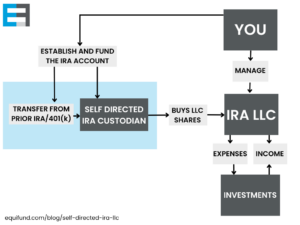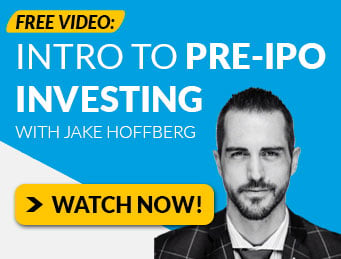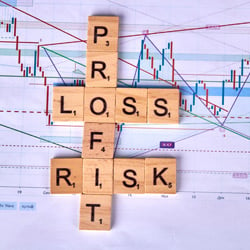In 1952, Harry Markowitz published one of the most important theories in modern day finance…
So important that he later won the 1990 Alfred Nobel Memorial Prize in Economic Sciences for it.
It’s called Modern Portfolio Theory (MPT)… and is considered by some to be the bedrock of modern finance.
But some studies suggest this widely accepted theory is actually wrong (or at least not entirely right)…
And if you – or your financial advisor – are building a portfolio based on this potentially flawed theory, your money could be in more danger than you think.
To understand why, let’s start with…
A Quick Primer on Modern Portfolio Theory
At its heart, Markowitz’s theory is centered around a core assumption…
There is a rule which implies both that the investor should diversify and that he should maximize expected return.
The rule states that the investor does (or should) diversify his funds among all those securities which give maximum expected return.
However…
The portfolio with maximum expected return is not necessarily the one with minimum variance.
There is a rate at which the investor can gain expected return by taking on variance, or reduce variance by giving up expected return.
Put another way, it is possible for an investor to build a diversified portfolio of multiple assets or investments that will maximize expected returns while limiting variance (i.e. “risk”).
The math equation winds up being “Expected Returns (E) minus Variance (V)”
With this simple equation, we get a chart of all possible outcomes (which winds up being a circle).
The E-V rule states that the investor may want to select one of those portfolios which give rise to the (E, V) combinations indicated as efficient in the figure; i.e., those with minimum V for given E or more and maximum E for given V or less.
A portfolio is “efficient” if it has the best possible expected return for a given level of risk, or likewise the lowest possible risk for a given level of return. (which is represented by the outer line of the circle).
So, how do you build a portfolio that seeks to optimize Expected Return vs Variance?
By investing in uncorrelated assets – which is a fancy way of saying “invest in stuff that won’t all go down (or up) at the same time.”
Why? Because uncorrelated assets – in theory – should reduce large swings in the portfolio value.
This is one of the reasons why investors like owning physical assets like real estate, precious metals, and commodities vs purely owning “paper assets” like stocks and bonds.
While I certainly have no disagreement with the idea behind diversification, there is a major weakness when it comes to properly pricing in risk.
Black Swans, Tail Risk, and Barbell Investing
The term “Black Swan” – an unpredictable event that is beyond what is normally expected of a situation and has potentially severe consequence – was popularized by Nassim Nicholas Taleb in his 2008 book, The Black Swan: The Impact of the Highly Improbable
In his own words…
What we call here a Black Swan (and capitalize it) is an event with the following three attributes.
First, it is an outlier, as it lies outside the realm of regular expectations, because nothing in the past can convincingly point to its possibility.
Second, it carries an extreme ‘impact’.
Third, in spite of its outlier status, human nature makes us concoct explanations for its occurrence after the fact, making it explainable and predictable.
I stop and summarize the triplet: rarity, extreme ‘impact’, and retrospective (though not prospective) predictability. A small number of Black Swans explains almost everything in our world, from the success of ideas and religions, to the dynamics of historical events, to elements of our own personal lives.
Or put another way, events beyond peoples’ predictions create massive – and often long term – impacts on history…
Which creates a huge problem when you’re trying to anticipate things like Expected Returns and Variance.
The solution?
Taleb’s thesis is simple: If it’s impossible to predict the unpredictable, it’s impossible to accurately account for risk…
And for an investor who can spot opportunities where risk isn’t properly priced in, they can stand to make a fortune.
A feat Taleb famously did as an options trader when he allegedly earned “tens of millions of dollars” from the stock-market crash on Oct 19th, 1987; Black Monday.
How’d he do it? By taking advantage of the gap between the “real risk” and the “expected risk” known as “Fat Tails.”
Essentially, the “fat tail” model describes how a typical bell curve – which has even distribution and “thin tails” at the edges – is wrong.
Why? Because the universe runs on Power Laws… not bell curves!
Unlike bell curves, Power Laws (heavily-tailed, non normal distributions) tell us that extreme events are massively more likely than we care to predict.
According to a 2014 whitepaper by NZS Capital called “Complexity Investing”…
Conventional market models and modern portfolio theory assume that events cluster around a mean (bell curve); but, in reality financial markets follow the 80/20 rule (power law).
Skipping past the math, the key insight we gain from power law modeling is: large changes/events are far more likely to occur than what ‘normal’ distribution curves would lead us to believe. In fact, they’re not that uncommon.
Which is why, for those of us who wonder why we live through so many three-standard deviation events, power laws make intuitive sense.
One might even argue that current risk models have made things worse, which takes us back to the future: because we can’t accurately predict the future, risk often turns out to be more random and extreme than our models predict.
Perhaps we should spend less time trying to build a portfolio that attempts to pin down the future within a narrow range of outcomes and neatly quantified risk (which is really tough unless you have access to a tricked-out DeLorean and a bit of plutonium).
Instead, perhaps we should think more about allocating capital in a way that reflects how companies and portfolios thrive in a complex environment.
So, the next time you ask someone “should I invest in XYZ” the reason why it’s so hard to answer is because it’s entirely relative to the rest of your portfolio.
Which brings us to a perhaps more important question.
If the financial models being used by a majority of investment professionals are, in fact, wrong because they assume bell curve distribution…
How does an investor think about building a Power Law Portfolio that is designed to take advantage of these Black Swan events?
According to Taleb…
“If you know that you are vulnerable to prediction errors, and accept that most risk measures are flawed, then [one potential] strategy is to be as hyper-conservative and hyper-aggressive as you can be, instead of being mildly aggressive or conservative.”
This strategy – known as Barbell Investing – requires the investor to essentially cut out the middle section of the portfolio and weight it heavily at the extremes.
This kind of portfolio might look like 90% allocation in cash, bonds and gold, and the remaining 10% on highly speculative opportunities.
Final Thoughts
As a quick reminder, I am not a certified financial planner, a registered investment advisor, or a guru capable of predicting the future.
For all intents and purposes, I’m just some guy on the internet who sends you entertaining and educational emails on a weekly basis.
We encourage you to do some of your own research and/or speak with your financial advisor to determine what level of risk is appropriate for your portfolio. Investing in speculative securities involves significant risk and may result in the loss of some, or all, of the principal invested.
Sincerely,
Jake Hoffberg – Publisher
Equifund

















